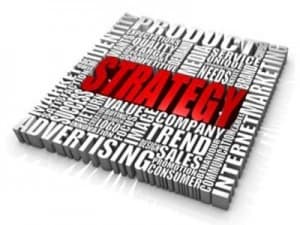
Setting aside SAP’s maintenance few missteps, SAP lacked at forward-looking vision in 2010. SAP did little to inspire the marketplace, but the introduction of alternative maintenance players like Rimini Street meant that SAP needed to innovate and create a compelling message. Even if some argue that SAP had provided a compelling message, I did not know what that message could be even though I had been working on SAP projects since 1994.
To that end, I even penned a plea to SAP calling for innovation and market leadership. That posting, entitled “Opportunities for SAP Innovation” [FN1] laid out some clear but relatively simple application changes to the ERP flagship product from SAP. Although well received by a number of SAP insiders, those in key decision making roles will likely not adopt much, or even any, of the application improvement ideas.
Where SAP Is Missing a Key Business and Market Opportunity for Leadership
In reading through a post on the CIO Magazine blogs (“ERP Costs: 3 Signs Companies Are Wasting Less Money” [FN2]) on Panorama’s comparison of Saas with traditional ERP, Saas does not seem to be as ideal of a system as it was cracked up to be. SAP has completely missed the boat here on not capitalizing on the genuine shortcomings of Saas ERP compared to on-premise ERP solutions like SAP.
Saas ERP is implemented over 35% more quickly (11.6 mo v. 18.4), but costs only 10% less to implement (6.2 v. 6.9 ann. rev). Even though CEOs may be slightly more satisfied (<3% difference, may be margin of error?), business is more disappointed (23.5 sat v. 42.9). Additionally, Saas is more often over budget (70.6% vs. 59%). If this were a head-to-head comparison by the same measures as on-premise ERP applications, it would be considered an utter failure and an unmitigated disaster. Unfortunately, the technology trade publications tend to be eerily silent on this. Where is SAP’s market leadership to point this out? Also, how about the security issues?
- Saas ERP is implemented over 35% faster but only costs 10% less.
- CEO satisfaction difference is marginal so that unless the sampling size is massive (which is doubtful), it falls within a margin of error.
- Businesses are about half as satisfied with Saas solutions as they are with on-premise solutions.
- Saas blows the budget about 17%-20% more often than on-premise ERP.
- Off-site (off-premise) access and security troubles plague Saas and “Cloud computing” models.
- Another layer and level of contracts and service level agreements must be correctly navigated.
When you look at the facts and strip away the hype, on-premise ERP solutions win hands down.
However, SAP has done nothing to address this in the marketplace. SAP has also done little to truly address the usability of their software, other than provide a technical toolkit (GUI XT) to allow customers to create their own front ends. Much more could be done.
SAP could today “Apple-ize” their user interface and end user experience to be more intuitive and more responsive to end users. I’m not referring to an iPod or iPad touch interface, but more of an intuitive look and feel that would make a user’s daily tasks simpler and less confusing.
What Does the Future of SAP Look Like?
- SAP will need to define and articulate to the marketplace a clearer message about its value proposition and differences.
- SAP should focus on end-user experience and a more intuitive user interface to help reduce the change management, adoption, and transition pain.
- SAP should refocus its application landscape messages, sales messages, and strengths on business solutions rather than package solutions.[FN3] Too much time and attention is spent on application features by the SAP literature and sales force, and not enough on what those features mean to business.
- SAP must develop an internal reference database of every consultant who has ever taken a course, or been certified with them. For far too long, the company has allowed fakes, frauds, and cons to lie about certifications or training, and SAP has not provided any way to verify these claims. SAP needs to provide a “transcript” of courses and certifications for end-customer use when a potential employee or contractor comes to them.
These and many other straightforward solutions would help generate marketplace buzz about SAP’s enterprise application suite and provide customers reasons for a purchase or upgrade.
[FN1] https://www.iitrun.com/opportunities-for-sap-innovation/
[FN2] http://www.cio.com/article/531863/ERP_Costs_3_Signs_Companies_Are_Wasting_Less_Money
[FN3] Over the years, I have heard so many SAP sales reps and sales presentations that focus on this SAP application or that SAP application, rather than addressing a business need or actual business requirements. All these salespeople do is describe features rather than explaining to the business how these features would benefit them. For way too long, many in the SAP sales force have relied on the SAP name.





